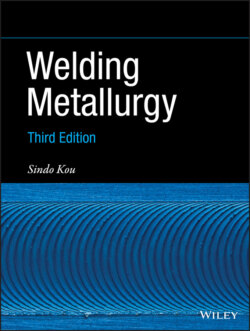Читать книгу Welding Metallurgy - Sindo Kou - Страница 30
1.3.2.5 Advantages and Disadvantages
ОглавлениеThe limited heat input of GTAW makes it useful for welding thin gauges, repairing, or welding thick sections that need to be welded with many small passes to ensure good weld quality. Since the filler metal is not the electrode, it can be deposited without melting much of the base metal to dilute it. This is desirable in depositing a wear‐ or corrosion‐resistant layer on steels. It can also be used to weld butt joints of thin sheets by fusion alone – that is, without the addition of filler metals. This is called autogenous welding. Since the GTAW process is a very clean welding process, it can be used to weld reactive metals, such as titanium and zirconium, aluminum, and magnesium.
However, the deposition rate in GTAW is low. Excessive welding currents can cause melting of the tungsten electrode and results in brittle tungsten inclusions in the weld metal. However, by using preheated filler metals, the deposition rate can be improved. In the hot‐wire GTAW process, the wire is fed into and in contact with the weld pool so that resistance heating can be obtained by using a second power source to pass an electric current through the wire.
